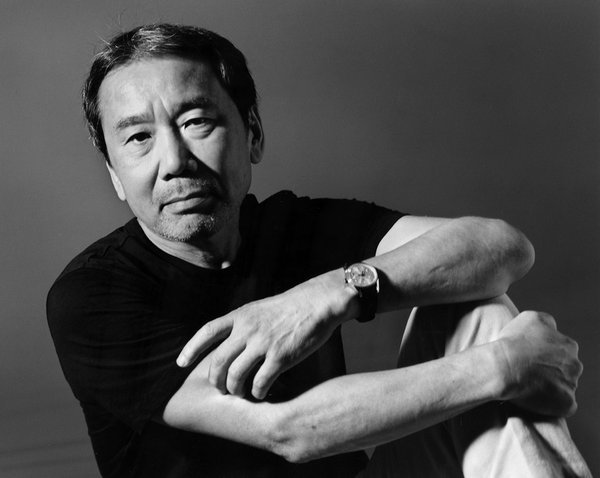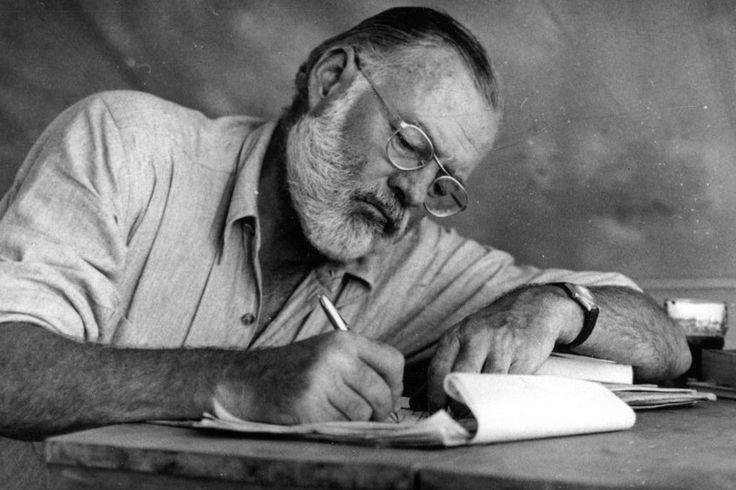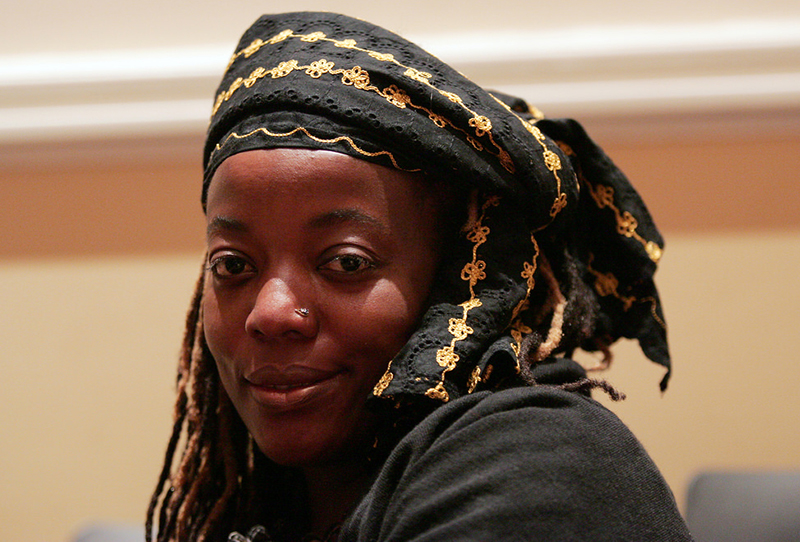
The start of a new year is the perfect time to reassess where you are with your writing and set yourself up for success. But it’s not always about waiting for inspiration to strike. It’s about building a process that helps you consistently show up, even when the words don’t come easily. That’s where learning from the habits of other writers—both novelists and screenwriters—can help. They’ve figured out what works, and you can too.
Here are 8 writing habits from famous authors and screenwriters that could just be the boost you need for your own writing in 2025. No gimmicks, no magic tricks—just solid advice on how to build a routine that keeps you going when the going gets tough.
1. Haruki Murakami: The Power of Routine and Early Mornings
If you’ve read Murakami, you know his books are both fantastical and grounded. But his writing process? Super practical. The man gets up at 4 a.m. every single day to write for five to six hours straight. He doesn’t wait for “the muse” to show up. He writes because that’s what he does. Then he spends the rest of the day running, swimming, or reading. That balance of routine and physical movement keeps him sharp—mentally and physically.

In the afternoon, I run for 10km or swim for 1500m (or do both), then I read a bit and listen to some music. I go to bed at 9:00 pm. I keep to this routine every day without variation. The repetition itself becomes the important thing; it’s a form of mesmerism. I mesmerize myself to reach a deeper state of mind. But to hold to such repetition for so long — six months to a year — requires a good amount of mental and physical strength.
– Haruki Murakami, The Art of Fiction No. 182 | Paris Review
Why it works: Writing is all about discipline, and it’s easier to stick to when you’ve built a solid routine. If you’re someone who feels the pull to procrastinate, committing to a set time can help turn writing into a daily habit, not an occasional hobby.
Takeaway: Pick a time in the day that works for you (preferably early, like Murakami) and just write—no distractions. You’ll be amazed at how much you can get done when you make writing a non-negotiable part of your routine.
2. Wole Soyinka: Structure and Focus

Wole Soyinka is not only a master of language, but also of time management. He sticks to a strict writing schedule that includes hours of uninterrupted writing, followed by structured time for reading and other creative work. For him, consistency is key. And even though he’s working in multiple creative fields, he’s deliberate in how he spends his day—writing, thinking, and reflecting.
Why it works: A rigid structure is a game-changer when it comes to productivity. It’s easy to say “I’ll write when I feel inspired,” but that rarely works. Soyinka’s method shows that putting writing into your calendar—just like any other job—can really help you push through the tough days.
Takeaway: Set a schedule and stick to it. Having a clear structure for your writing time frees you up to focus on your craft, knowing the time has already been set aside.
3. Maya Angelou: Creating a Distraction-Free Space
Maya Angelou had a method that worked wonders for her: she rented hotel rooms to escape everyday distractions. Armed with a dictionary, Bible, a bottle of sherry, and a pad of paper, she could pour her focus into writing without anything pulling her attention away. Angelou’s idea wasn’t about finding a perfect spot to write—she made wherever she was her “sacred” space.
Why it works: Writing isn’t about waiting for perfect conditions, but it’s about creating an environment that helps you concentrate. For Angelou, removing all distractions and setting the mood was her secret weapon.
Takeaway: Whether it’s a local coffee shop, a quiet room, or even a corner in a library—find a space where you can escape distractions and dive deep into your work.

4. Aaron Sorkin: Structure and Focus
Aaron Sorkin, the man behind The Social Network and West Wing, has one simple rule: write in the morning. He wakes up at 5 a.m. and writes for the first few hours of the day. It’s during these quiet morning hours that he finds his best work. And when he’s working on a project, he’s all in—making sure to stay focused and finish what he started before moving on to something else.
Why it works: Aaron knows that mornings are when his mind is sharpest, and he uses that time to write at his full potential. Plus, he keeps distractions at bay by setting clear boundaries—no switching to other tasks until the work is done.
Takeaway: Find your peak productivity time and make it a habit to write then. Early mornings might work for Sorkin, but it could be different for you—just find that sweet spot when your brain is at its best.

5. Ernest Hemingway: Stop Before You’re Finished
Hemingway famously said, “Write drunk, edit sober,” but another piece of his advice that gets overlooked is his writing habit of stopping while he still had ideas flowing. He would finish his writing for the day mid-sentence or even mid-thought. This technique gave him a head start the next day and helped him maintain momentum.

Why it works: The temptation is to finish that scene or write the perfect ending before you stop. But by leaving work unfinished, you’re making it easier to pick up again tomorrow. Plus, you never lose that creative spark.
Takeaway: Stop writing while you still have ideas. Leave a little bit of the puzzle unsolved so that you have a clearer path when you start again the next day.
6. Joan Didion: Writing in the Morning, Walking for Clarity
Joan Didion’s mornings were dedicated to writing, while her afternoons were spent walking. The routine was simple but powerful. Writing first thing, when her mind was fresh, allowed her to get a clear focus on her day’s work. Then, the walks helped her clear her head and come back to her desk with new perspectives.

Why it works: By setting a clear boundary for when you write, you help train your brain to switch into “writing mode.” Plus, the physical activity of walking helps your mind stay sharp, providing you with fresh insights for your writing.
Takeaway: Write first thing in the morning, then take a break with a walk, workout, or some other form of movement. This keeps your mind engaged and sharp.
7. Tsitsi Dangarembga: Observation and Reflection
Tsitsi Dangarembga, known for her novel Nervous Conditions, is a master of observation. Her writing is deeply reflective of social dynamics, and she takes time to carefully observe the world around her. Whether it’s people in her life or the cultural and political landscape, Dangarembga is able to capture the smallest details that bring her characters and stories to life.

Why it works: By taking time to notice the world around you, your writing becomes more detailed and nuanced. Paying attention to human behavior, body language, and everyday interactions can make your characters and settings feel more real.
Takeaway: Don’t rush the writing. Let your observations become part of your creative process. The more you observe, the richer your writing will become.
8. Anthony Trollope: The Power of Small, Steady Goals
Anthony Trollope is famous for his writing habit of setting a daily word count goal of 2,500 words. He worked quickly, writing 250 words every 15 minutes, and adhered to his schedule without fail. For Trollope, the key to his success was focusing on small, steady increments of progress.
Why it works: It’s easy to feel overwhelmed by the idea of writing a whole book or screenplay, but focusing on small, manageable goals makes it easier to make progress. Writing 250 words every 15 minutes may seem small, but it adds up quickly.
Takeaway: Set a word count or time goal for each writing session. Break your work into small, achievable tasks so you can stay motivated and keep the momentum going.

Wrapping It Up: Make It Work for You
Writing is tough, no doubt. But these habits show that success isn’t about waiting for inspiration—it’s about showing up. From Murakami’s early mornings to Trollope’s daily word count, these writers built routines that worked for them.
This year, build a process that fits you. Don’t wait for perfection. Just show up, put in the work, and trust that your consistency will lead to progress. Let’s make 2025 the year you own your writing routine.



